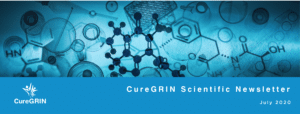Essential Question 6: What are optimal drugs and molecules targeting NMDARs and related ion receptors?
Share This Post

Each Thursday throughout the summer, CureGRIN will be sharing a blog post that summarizes one of the 10 “Essential Questions” that need to be answered in order to find cures and treatments for GRIN Disorder. These questions are a central component of our recently unveiled Research Roadmap titled, “Treat the Symptoms. Cure the Disease.” You can find links to all of these blog posts here.
Today, we focus on Essential Question 6:
What are optimal drugs and molecules targeting NMDARs and related ion receptors?
We’ve spent the last couple of weeks outlining the details of CureGRIN’s plans to research gene therapy strategies. However, this week, we are going to shift our focus to drugs and molecules.
The U.S. Food & Drug Administration (FDA) defines a drug as “a substance intended for use in the diagnosis, cure, mitigation, treatment, or prevention of disease.” However, the FDA classifies new molecules that haven’t yet been approved as a “new chemical entity” or a “new molecular entity.” Hence, when CureGRIN talks about drugs, we are describing medicines that have been previously approved by the FDA for another disease or condition but could still possibly be helpful for GRIN and other GRI disorder patients. However, when CureGRIN talks about molecules, we are describing potential medicines that haven’t yet been approved by the FDA that might help GRIN and other GRI disorder patients.
As a part of CureGRIN’s three-tiered approach for finding treatments and cures for GRIN and other GRI disorders, we plan to spend about 30% of our time and resources researching drugs and molecules that target NMDARs, AMPARs, and kainate receptors. These drugs and molecules include agonists, antagonists, PAMs, NAMs, etc. Can these various types of drugs bring GRIN-related receptors and other GRI-related receptors into balance?
First, let’s better understand what these types of drugs and molecules are, how they work, and how they might help.
Agonists are substances that bind to and activate a receptor, which produces a biological response. For example, glutamate is an agonist of the NMDAR. There are two types of agonists: endogenous agonists and exogenous agonists. Endogenous agonists are naturally produced in the body, such as hormones and neurotransmitters, whereas exogenous agonists are external factors, such as drugs.
An example of an NMDAR agonist is L-serine. L-serine has been studied in a patient with GRIN disorder with a GRIN2B loss-of-function variant. There were improvements in motor impairments, cognition, and communication in this patient. There is currently an ongoing clinical trial for L-serine, which is being led by Dr. Angels García Cazorla and the Barcelona GRIN team.
Antagonists are substances that interfere with or inhibit the action of the receptor. An example of an NMDAR antagonist is memantine. There have been several single-patient (N=1) studies where memantine was prescribed off-label.
These individual research studies have looked at patients with gain-of-function variants in the GRIN1 (Xu et al., 2021), GRIN2A (Pierson et al., 2014; Amador et al., 2020), and GRIN2B genes (Platzer et al., 2017). Some of these studies have shown that the memantine treatment reduced the frequency or burden of seizures in some of these individual patients. However, no large-scale clinical trials for memantine in GRIN disorder patients have been carried out.
PAMs (positive allosteric modulators) act to enhance the function of a receptor. PAMs work in the presence of an agonist (a substance, like glutamate, that activates a receptor), but they are not able to directly activate the receptor without the agonist. PAMs essentially increase an agonist’s ability to work, boosting the overall activity of the receptor.
Some of the classes of PAMs that have been investigated for NMDARs are spermine, pregnenolone sulfate, and 24 (S)-HC. 24 (S)-HC, also called SAGE 718, is now in clinical trials for Alzheimer’s and Parkinson’s Disease at Sage Therapeutics. The hurdle has been to find PAMs that target specific NMDAR subunit types (NR1, NR2A, NR2B, NR2D).
NAMs (negative allosteric modulators) are molecules that block the binding of the agonist (activator) to a receptor. A NAM binds to a site on the receptor that is different from the spot where the agonist binds, weakening the overall activity of the receptor. For example, Radiprodil is a drug that acts as a NAM of the NR2B subunit of the NMDA receptor. This drug has been investigated for a type of epileptic encephalopathy known as infantile spasm syndrome (ISS).
For each of these various types of drugs and molecules, it is important to note that it is crucial to have functional testing performed on a patient’s variant before deciding which drug options might work for them. We would expect agonists and PAMs to help patients with a clear loss-of-function variant, while antagonists and NAMs would help patients with a clear gain-of-function variant. If the wrong type of drug or molecule is given to a patient based on their functional testing, this could make their symptoms worse.
For example, if memantine (an NMDAR antagonist) was given to a patient with a loss-of-function variant, this would mean that their NMDARs would be working even less, which could result in increased seizure activity and other health complications. This is why memantine has only been prescribed for patients with gain-of-function GRIN gene variants.
In summary, there are many important factors to consider when thinking about drug development for GRIN and other GRI disorders. Therefore, CureGRIN will partner with researchers and pharmaceutical companies to assess what the right drugs and molecules are to help patients with GRIN and other GRI disorders.
Read more Posts

Three Things You Should Know About Our Kids with GRIN Disorder
Share This Post Share on facebook Share on linkedin Share on twitter Share on email Many individuals with GRIN Disorder are non-verbal or have limited

CureGRIN Scientific Newsletter – Jan 2021
Every two months, we’ll be sharing updates on the latest publications about GRIN genes, NMDA receptors and other glutamate receptors.
